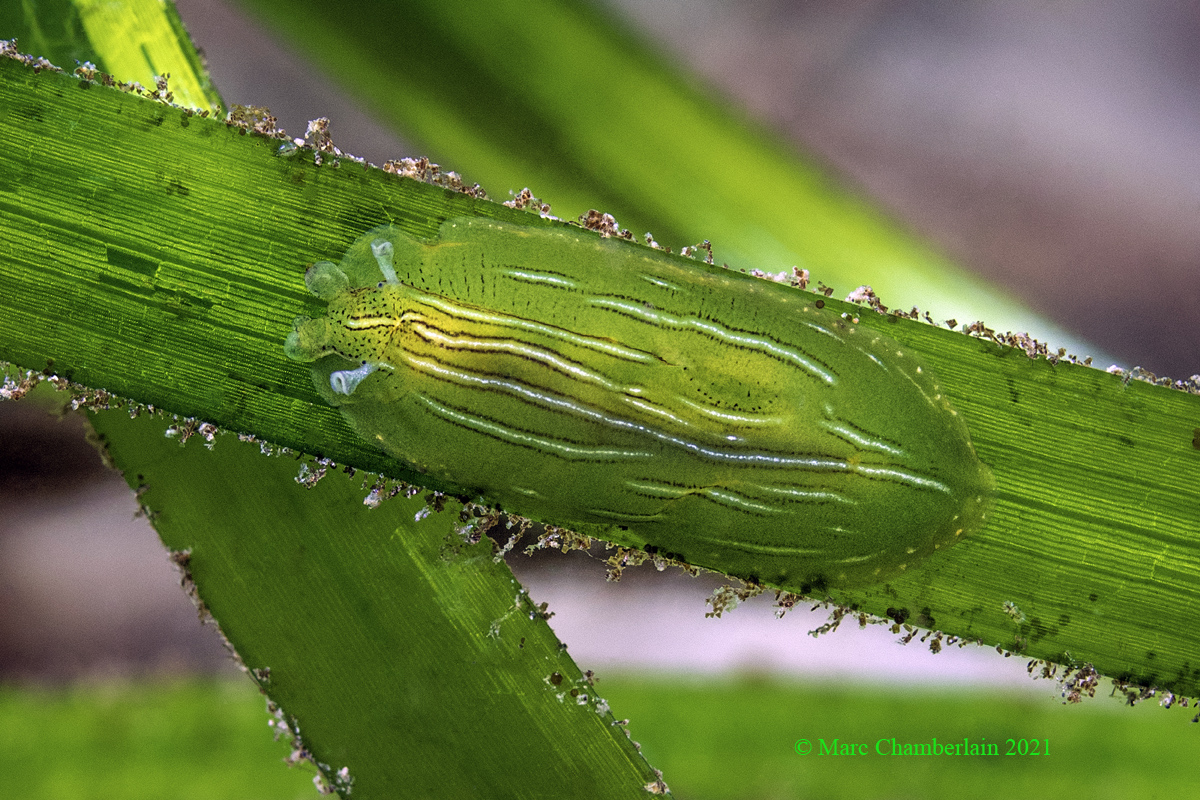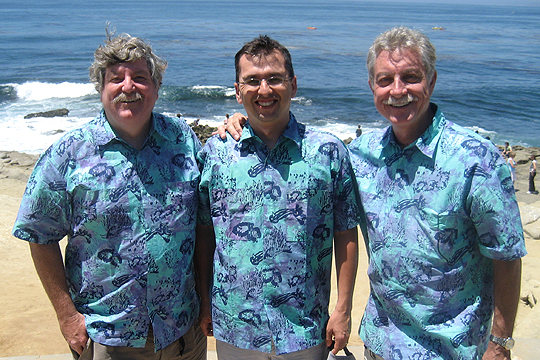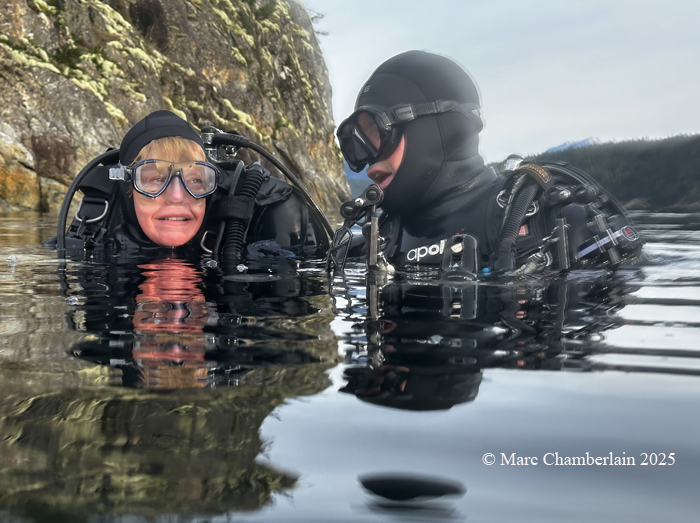 |
Image courtesy of Marc Chamberlain
Alki Junkyard Puget Sound Salish Sea West Seattle Washington
|
Phyllaplysia taylori Dall 1900 P. taylori is a dorso-ventrally flattened sea hare that lives between the leaves of the marine seagrass, Zostera. Its body coloration closely matches that of the plant's cell pattern making even more cryptic between the plants leaves. This was one of the first slugs I was introduced to as one of my most favorite college professors at SFSU, Dr. Robert David Beeman won a National Science Foundation grant to research how this species activated its mate's sperm upon fertilization. Beeman's hope was that this research could shed light on and eventually lead to a male birth control option for humans. Recently, Brancher-buddy Kevin Lee shared an interesting paper by Tanner, et al. (2025) with us that suggests that this slug is crucially important in maintaining the health and primary productivity of seagrass beds. The authors emphasize the importance of seagrass beds stating - "Despite their small footprint, seagrass ecosystems provide outsized environmental benefits-serving as essential nurseries for commercial fish species, storing significant amounts of coastal carbon, protecting shorelines from waves, and helping to buffer against ocean acidification." What does the slug do to achieve this task? Well, reports the authors - "The sea hares act as natural vacuum cleaners in these vital ecosystems, consuming problematic algae (epiphytes) that grow on seagrass blades. You can see this in Marc's photo as the seagrass is clean of epiphytes along its surface. This cleaning service is becoming increasingly important as warming waters accelerate algal growth, which can smother seagrass and inhibit photosynthesis." Please note that this phenomenon was first suggested by Dr. Marc Chamberlain in Branch of the Week 1194 also on P. taylori. So, the next time someone asks you what sea slugs are good for, you can tell them - well for 1 - they are the promoters of photosynthesis, producing the oxygen we breathe, from seagrass beds along our coast. You might add this comment from the authors - "The implications for seagrass restoration are significant. The study suggests that eelgrass sea hares could be valuable partners in restoration projects, helping to maintain the health of the entire ecosystems around newly planted seagrass beds. Reference:
R. L. Tanner; R. C.K. Bowie; C. Y. Wang-Claypool; and J. H. Stillman. 2025. Variation in thermal tolerance plasticity and the costs of heat exposure in the estuarine seahare, Phyllaplysia taylori. Ecosphere.2025;16:e70191. Dave Behrens New Braunfels, Texas Mar., 2025 Send Dave email at davidwbehrens@gmail.com
Marc and Michelle Chamberlain
|

|

